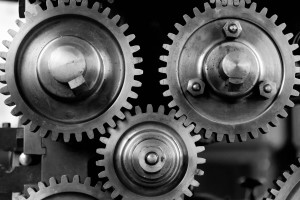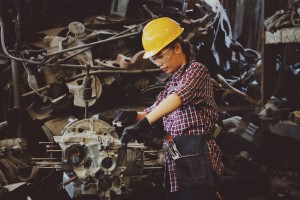Fields from the steel industry to the maritime industry rely on industrial gearboxes’ durability to function. Gearboxes are strong enough to help power ship engines to reach their destinations and tough enough to withstand high levels of torque from wind turbines. We build Falk gearboxes to last through such important jobs. However, we still run into equipment maintenance issues sometimes.
Understanding Gearbox Misalignment
Misalignment problems in gearboxes are the top reason for repairs. There are many causes for misalignment.

- The gearbox was set up incorrectly
- The wrong gearbox was chosen for the job
- A heavy load overstressed the gearbox
- Heat from nearby machines could have caused one side of the gearbox to expand unevenly
Ohio State University researchers found that other factors can cause misalignment, including lead slope error, lead wobble and centrifugal forces. You can look into their analysis on GearSolutions for a more technical explanation of why and how gearboxes get misaligned.
Misalignment can happen because of static factors like manufacturing defects or user error. Dynamic causes include heavy loads stretching the gearbox’s components and thermal expansion.
What Happens During a Misalignment?
Misalignment manifests in gears and bearings alike. One end of a gear’s teeth might start cracking, or pitting, earlier than they should, and similar damage might happen to bearings, as well. The cage may become worn and eventually fail. No matter how Falk gearbox misalignments happen, it’s important to understand that the problem is serious and work to correct it.
For a gearbox to run normally, it needs to line up exactly with motors and other drives involved. The gearbox’s input and output shafts must match with its corresponding drive unit’s shafts. When the other unit and the gearbox do not come together correctly, the gearbox is misaligned. Misalignment puts a lot of pressure on Falk gearbox parts like shafts and coupling, and may exhaust the device enough to lead to intense wear and tear, and even failure, of the unit.
Checking Gears for Alignment
Large gear systems are the most vulnerable to misalignment. After all, the bearing alignment tends to need to be just as accurate as with smaller units, but the bigger size makes it harder to align the gears. Checking that shafts line up isn’t always practical, so you might want to perform blueing checks on the teeth to see if there’s enough torque in the drive and the tooth bedding gives good contact loading in both directions.
If the gears are misaligned, they can be fixed in a variety of ways. For example, a laser shaft alignment system can both measure how much your misaligned gears are offset and rotate and otherwise move the shafts.
Will My Gearbox Fail?
Gears usually fail because of a variety of factors, rather than a single cause. However, misalignment is among the biggest culprits. Neale Consulting Engineers credits gearbox misalignment as having at least a partial role in 19 percent of all gearbox failures they’ve studied over the last 30 years. While manufacturing errors, bearing failures and other issues may also play an equally destructive role, understanding gearbox misalignment is key to fixing and preventing substantial problems.
Potential gearbox misalignment can be a difficult problem to tackle on your own. Misalignment puts a lot of stress on the unit, meaning it may wear and break down the gearbox and even cause it to fail. Professional technicians can be indispensable to discovering if a misalignment exists and helping you fix it. They’ll help you avoid the dangers tied to a misaligned Falk speed gearbox and prevent similar problems in the future. Talk to a Falk gearbox specialist today for repairs through Mar-Dustrial.
Posted under Falk Gearboxes, Machinery Maintenance on Wednesday, October 10th, 2018
